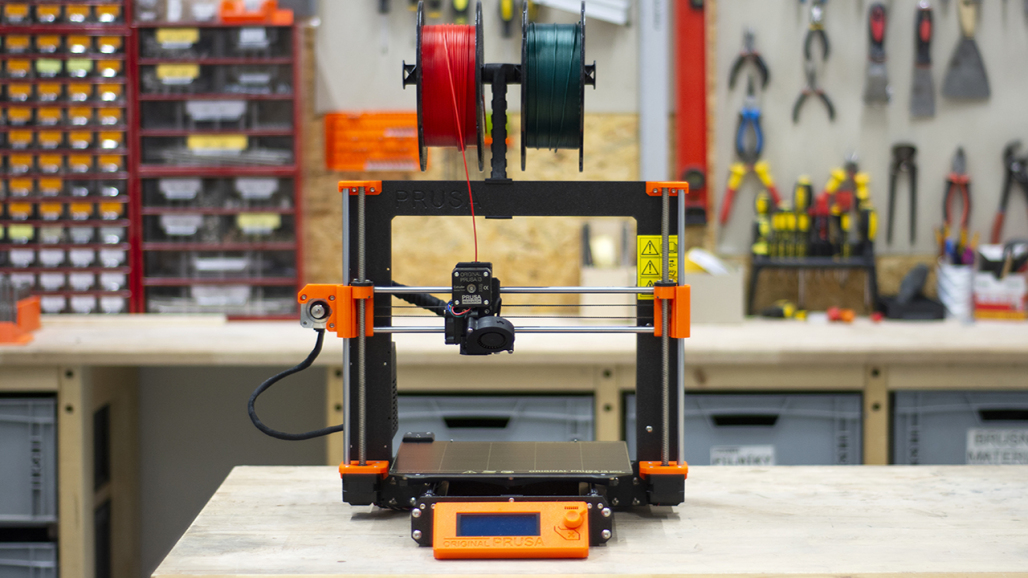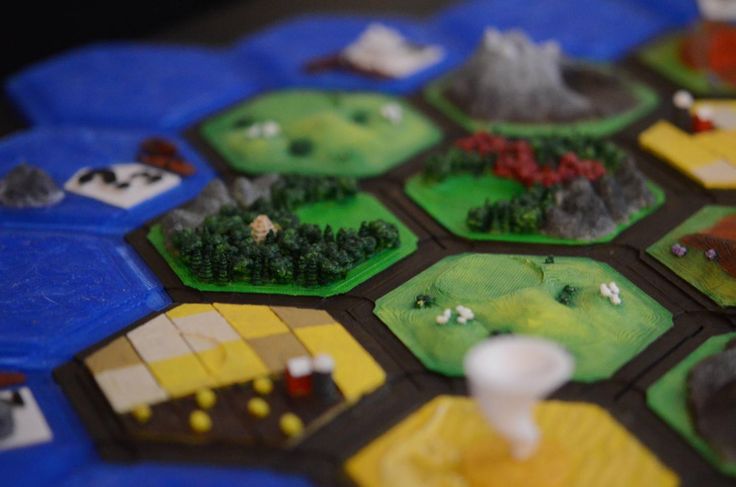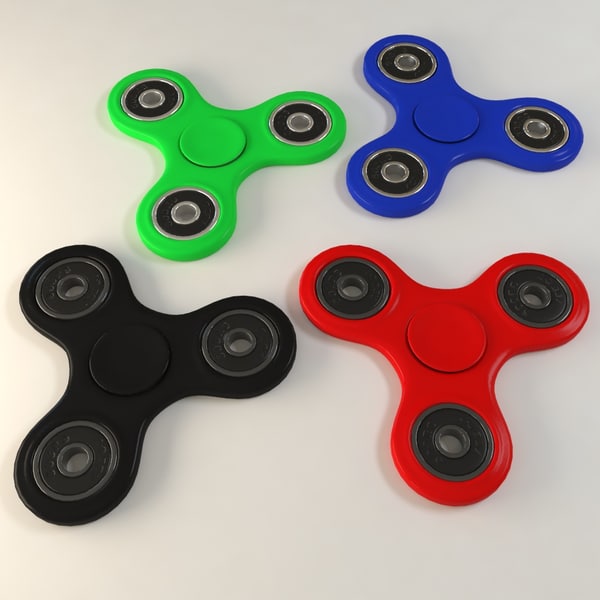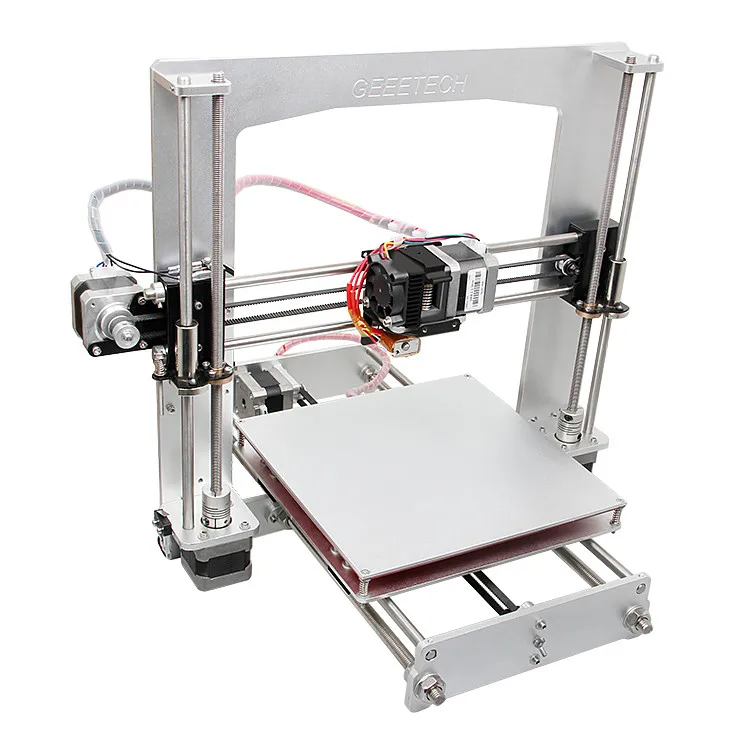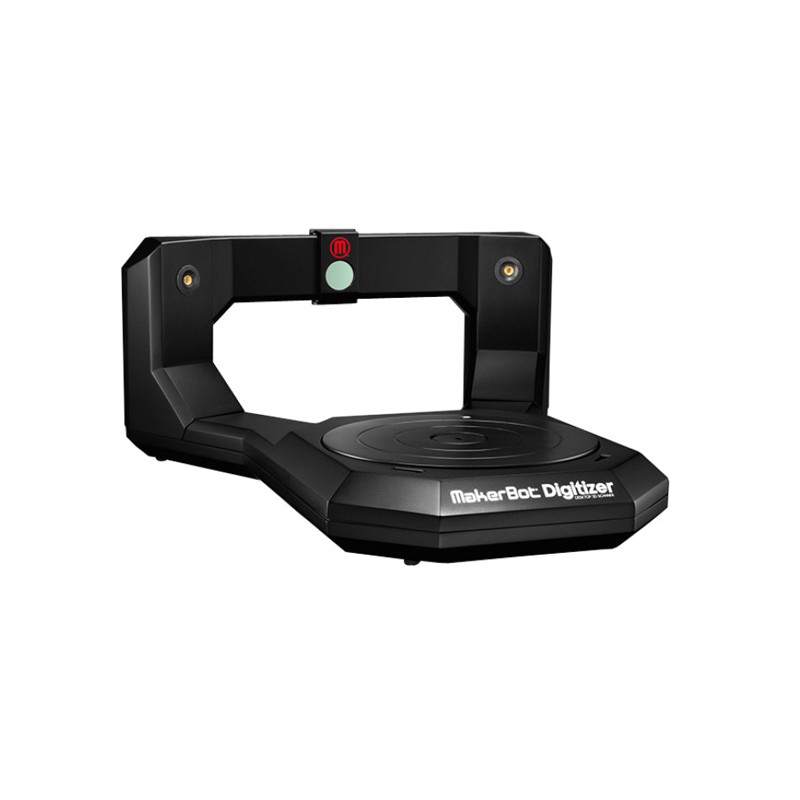3D printed bionic hands
Teenagers develop 3D-printed bionic arm 30 times cheaper than existing prosthetics
Article
Seeking to create affordable solutions for people with disabilities, Global GenU winning team eBionics developed a 3D-printed bionic arm which allows anyone to print and assemble it themselves.
Lisar Morina
UNICEF North Macedonia
28 January 2021
Skopje, North Macedonia – Somewhere in downtown Skopje, amid the purring of engines and honking of sirens, 17-year-old Boris meanders the many streets and alleys of the city to make his way into an inconspicuous building not far from the plaza. He steps into a small makeshift workshop lined with shelves full of odd machines, wrenches, screwdrivers, crates and canisters with labels of all kinds. Joining three other teenagers, he sits in front of a 3D printer. It is printing a prosthetic arm.
One glance suffices to realise that Boris and his friends are not just high-school students. They are also remarkable innovators with a zeal and fervor about their work that is contagious.
“People look differently at young innovators like us—they don’t believe that we are capable of creating impactful innovations that help people at large,” says Boris. “But we like to think differently.”
Driven by a deep desire to create affordable solutions for people with disabilities, 17-year-old Boris Nocheski, 17-year-old Anamaria Ilieva, 16-year-old Teo Kitanovski, and 17-year-old Orhan Bahashov are using 3D printing technology to create a user-friendly bionic arm that is 1/30th of the price of existing prosthetics. And it can “grow” with children!
Globally, millions of people suffer from upper limb deficiencies, which can affect physical and mental health and inhibit people from leading productive lives. Prosthetic arms and artificial limbs can vastly improve the ability of people living with upper limb disabilities to be independent and engage in daily activities. But prosthetic limbs are expensive, need to be routinely replaced because of wear and tear, and are therefore out of reach for millions of people across the globe.
But prosthetic limbs are expensive, need to be routinely replaced because of wear and tear, and are therefore out of reach for millions of people across the globe.
“Currently-available bionic arms are inaccessible—they cost thousands of dollars, can only be bought in a few developed countries, and must be continuously changed if you’re a young person, as your body is constantly growing,” says Boris, who is the co-founder of eBionics. “We believe that these problems can be solved by approaching the [bionic arm] technology differently.”
The eBionics ‘VenusArm’ is 30 times cheaper than the second cheapest bionic arm in the market. This is because Boris and his team do not charge for shipping or labor, or pay profits to suppliers. The VenusArm, Boris explains passionately, allows anyone with access to a 3D printer to print the bionic arm themselves within just a short hour, using the instructions made available on the eBionics website. The team have also provided options to purchase the individual parts from third-party sellers to assemble the arm themselves.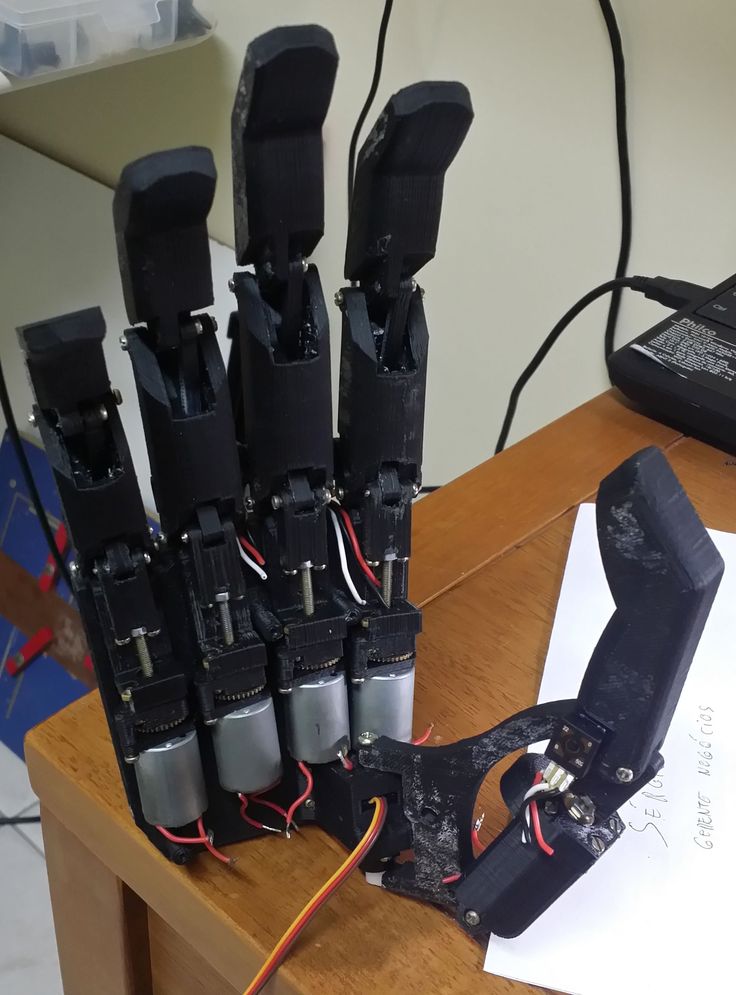
“Our VenusArm is entirely 3D printed and uses muscle sensors to allow for flexible movement that helps the user in everyday life,” says Boris, explaining that they also used an impression mold to create a universal socket, which means it will fit anyone, even growing children. “We want to make sure that people can get a fully functional bionic arm that is both affordable and available for everyone, regardless of where you are from.”
Bionic arms pick up signals from the user around the same muscles (typically below the elbow) used to move a biological hand. Specially designed sensors pick up electric signals and use these to create hand movement relative to the electrical signal.
In a video, trying the bionic arm for the first time, a young woman from North Macedonia said, “Even on the first day, after only thirty minutes of wearing it, I started feeling it as part of my body.” The young woman is shown using the bionic arm to operate a sewing machine and even to drive a car, stating that she feels like she is in “complete control, now that she has the arm”.
The youngsters behind ‘eBionics’ developed the blueprint of the bionic arm—dubbed VenusArm—at the global Generation Unlimited Youth Challenge which took place in 36 countries, encouraging young people to design entrepreneurial solutions to social challenges.
The Youth Challenge is a true example of a multi-sector partnership initiative—engaging the private sector in mentorship, youth-led organizations in grass-roots outreach, young people in co-creating solutions, and governments in the judging process.
A few months after winning the local competition, eBionics was crowned a global Generation Unlimited Winner—just one of 8 teams across the world to receive further funding of up to $15,000, along with a tailored global incubation programme which is coordinated globally by UNICEF’s Office of Innovation, working with GenU partners and Country Offices.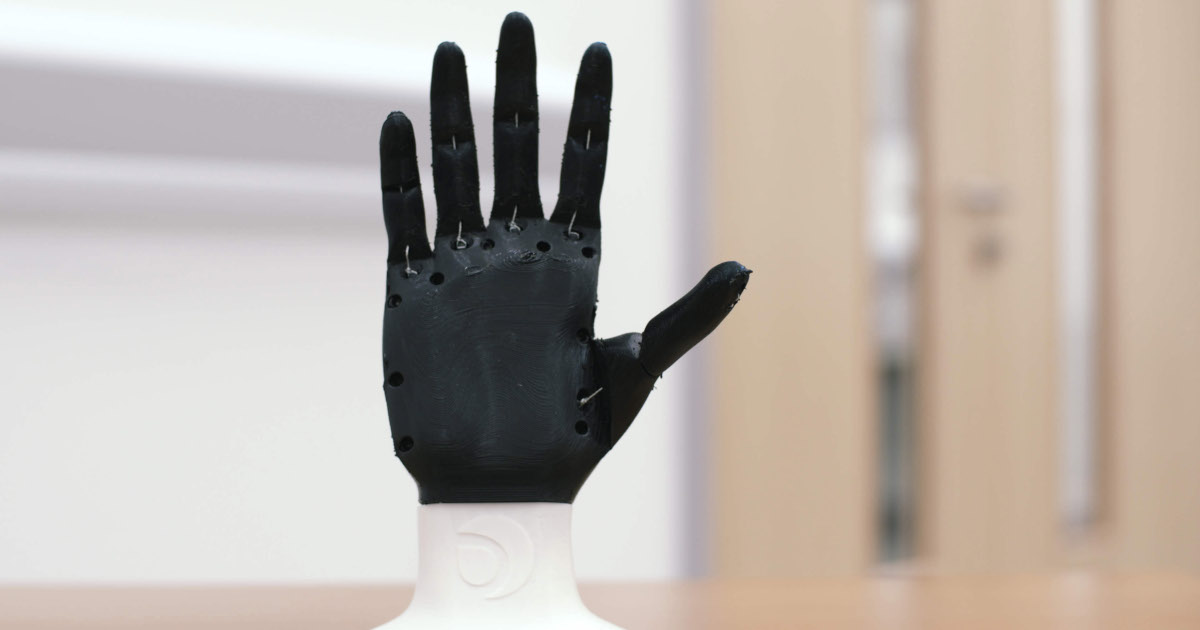
“Step by step, we are getting closer to our goal—creating value for all people around the world, especially those who need it most” says Boris. “Every idea can bе accomplished if you work hard on it, with the right people around you. Steve Jobs once said that the people who are crazy enough to think they can change the world are the ones who do. Throughout our whole experience, we were motivated by this quote and we believe that other talented young people also should!”
“We feel that our story won’t be complete without thanking UNICEF and Foundation Telekom for Macedonia, the supporters of the Generation Unlimited Youth Challenge in North Macedonia, as well as SmartUp - Social Innovation Lab, the implementers of the challenge. Without their help it would've been much harder to succeed,” says Boris.
EBionics’ vision is to create a user-generated sustainable and altruistic social enterprise with a worldwide community of makers, contributors and supporters, third-party partners, and most importantly, a business that provides affordable and reliable 3D printed bionic arms.
The
Generation Unlimited Youth Challenge 2019/20 is co-hosted globally by four Generation Unlimited partners – UNICEF, UNDP, Plan International and the World Organization of the Scout Movement, with support from Irish Aid
#3DStartup: Unlimited Tomorrow and its 3D Printed Bionic Prosthetic Arm
Published on October 6, 2022 by Madeleine P.
It is no secret that 3D printing has been making great waves in recent years in the medical sector. One arena in which the technologies have been especially useful is for making prostheses as it allows for lighter, more customized solutions for users. One notable example is the TrueLimb prosthetic from our startup of the month, Unlimited Tomorrow. The company uses 3D printing to create high-quality, low-cost bionic prosthetic arms with the goal of being accessible to all who need them.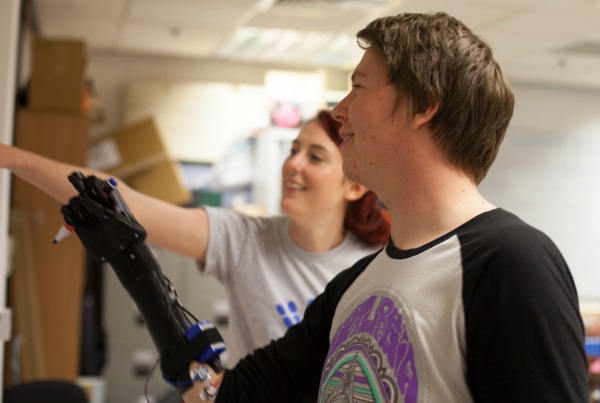 As such, they have also partnered with The Singularity Group in order to raise money to help amputee victims of the Russian invasion of Ukraine. We spoke with Jennifer Barbic, the Vice President of Marketing, to learn more about their TrueLimb prostheses, why they turned to 3D printing and their current projects.
As such, they have also partnered with The Singularity Group in order to raise money to help amputee victims of the Russian invasion of Ukraine. We spoke with Jennifer Barbic, the Vice President of Marketing, to learn more about their TrueLimb prostheses, why they turned to 3D printing and their current projects.
3DN: Could you introduce yourself and Unlimited Tomorrow?
My name is Jennifer Barbic. I am Vice President of Marketing for Unlimited Tomorrow. We produce a 3D printing bionic prosthetic arm called TrueLimb. As for Unlimited Tomorrow, to understand our company you must first understand our founder. Growing up in a small town in Colorado, Unlimited Tomorrow’s Founder and CEO, Easton LaChappelle, was a child who loved to tinker. He loved taking things apart to understand how they worked, building with legos, and experimenting with motors and gadgets. As a teenager he started experimenting with building robotic arms, first creating one that was wirelessly controlled, and eventually creating one using 3D printing, a new technology that fascinated Easton.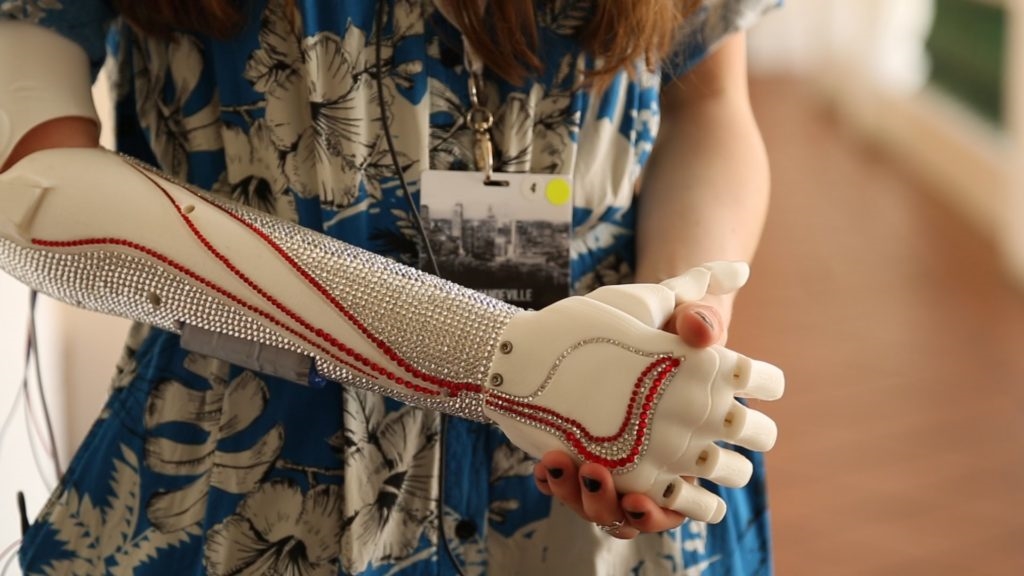 That 3D printed arm wound up winning 2nd place in engineering at the International Science Fair. As a result, Easton had the opportunity to meet former President Barack Obama, speak to international audiences including delivering a TedTalk, and pursue an internship at NASA. Even during this exciting time in Easton’s life, his mind kept coming back to a little girl he had met at the Colorado State Science Fair a few years prior.
That 3D printed arm wound up winning 2nd place in engineering at the International Science Fair. As a result, Easton had the opportunity to meet former President Barack Obama, speak to international audiences including delivering a TedTalk, and pursue an internship at NASA. Even during this exciting time in Easton’s life, his mind kept coming back to a little girl he had met at the Colorado State Science Fair a few years prior.
The Unlimited Tomorrow team including Jennifer Barbic (photo credits: Unlimited Tomorrow)
While Easton was showcasing his invention, he noticed one little girl closely examining the robotic arm, even more so than any other visitor. As he stepped over to talk to her, he noticed that the girl had an upper limb difference and was wearing a prosthesis. As he started talking to her and her parents, he was astounded by what they shared. The device that the girl was wearing was very heavy and uncomfortable, it did not match the size of her sound limb, and it had very minimal functionality.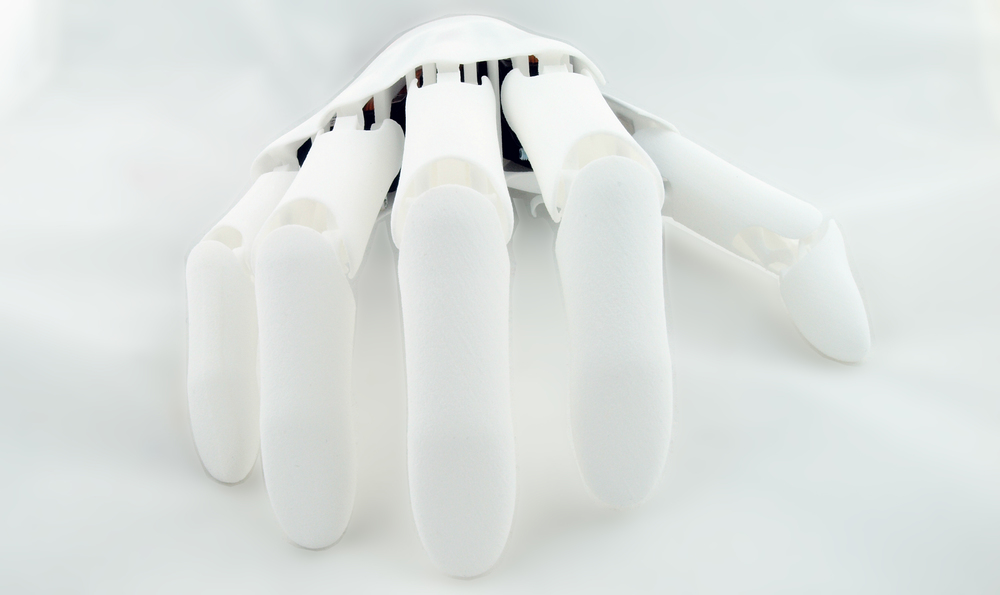 When they shared that the device had cost more than their annual salary, Easton was truly floored. The wheels started turning in Easton’s head after that conversation, and they never stopped. The girl had made such an impression on Easton that while he was interning at NASA, he continued to stay up late at night working on his robotic arm technology, thinking that there had to be a better solution for the challenges the girl and her family had faced.
When they shared that the device had cost more than their annual salary, Easton was truly floored. The wheels started turning in Easton’s head after that conversation, and they never stopped. The girl had made such an impression on Easton that while he was interning at NASA, he continued to stay up late at night working on his robotic arm technology, thinking that there had to be a better solution for the challenges the girl and her family had faced.
That one chance meeting had altered his view of what technology could do, and made him realize what he was truly passionate about. Upon returning home from his internship, the phone rang one day and shockingly it was author, coach, speaker, and philanthropist, Tony Robbins, asking to speak with Easton. Tony had seen Easton’s TedTalk and wanted to help him pursue his passion. He offered to help him found a company so that he could continue to build robotic arms. Easton agreed and together they founded Unlimited Tomorrow when Easton was just 18 years old.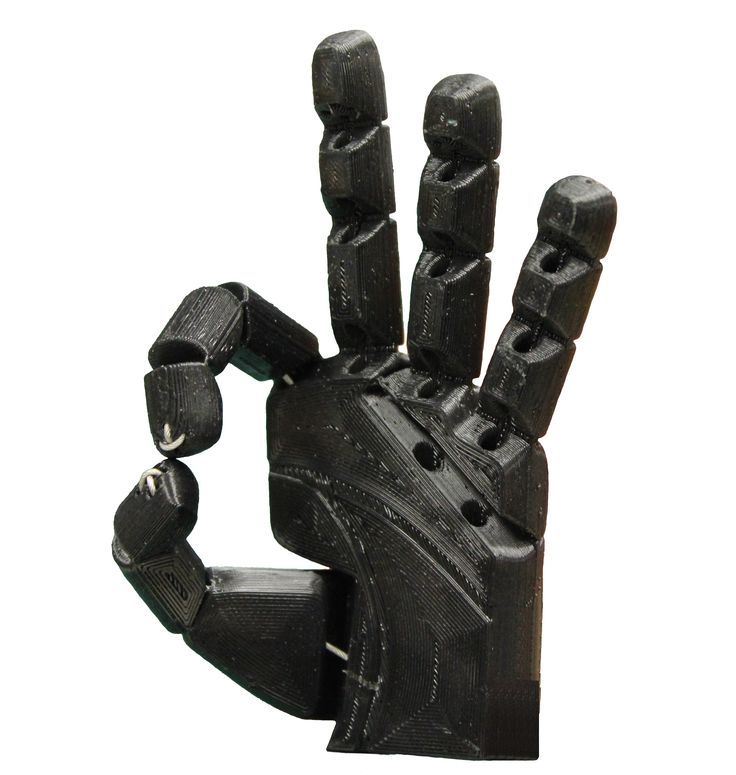 That drive is the core of our company.
That drive is the core of our company.
At Unlimited Tomorrow our first responsibility is to the individuals with limb differences we serve. We believe in pushing boundaries in order to improve prosthetic accessibility. We challenge ourselves to use all available technology and resources to make the highest quality, lowest cost prosthetic arms in the world.
The TrueLimb has been designed to overcome many of the limitations of traditional prosthetics (photo credits: Unlimited Tomorrow)
3DN: What is the TrueLimb Prosthetic? How does it differ from other prosthetics on the market?
The TrueLimb prosthetic arm was developed over eight years to solve common challenges that individuals with upper limb loss and limb differences face. Those challenges include devices that are too heavy, sizing that does not match the user, and affordability. Many individuals prefer a bionic arm with a natural skin tone look, but options with that look have historically been limited.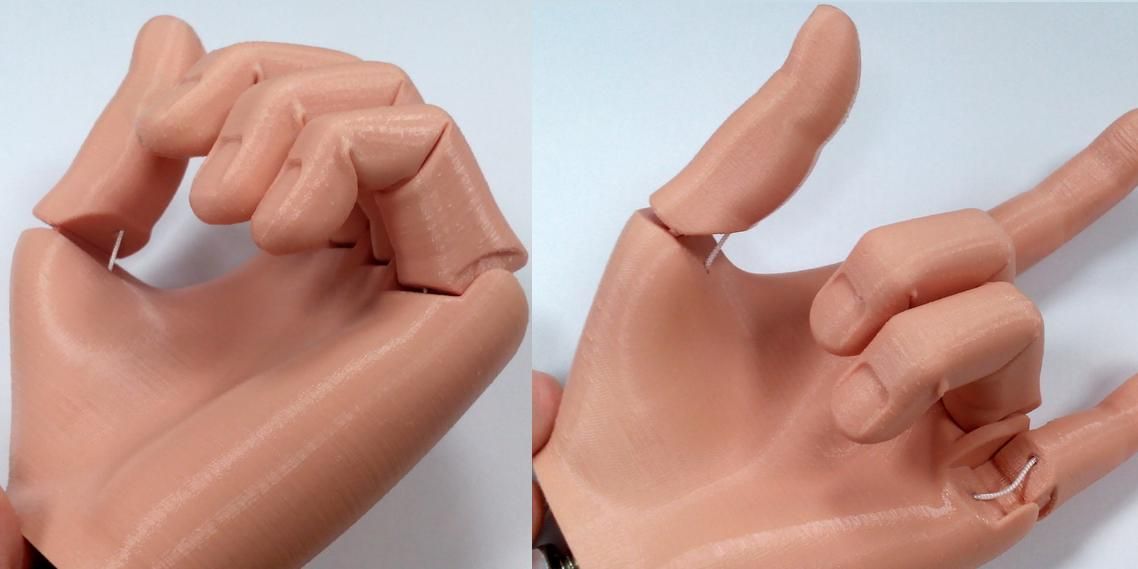 Batteries that power bionic arms often do not last throughout the day, and chargers can be proprietary and expensive. Sensors used to activate devices are often unreliable and sometimes impacted by moisture and sweat. People struggle with repairs taking a long time and costing a lot. Many individuals report issues with the learning curve of using a new device.
Batteries that power bionic arms often do not last throughout the day, and chargers can be proprietary and expensive. Sensors used to activate devices are often unreliable and sometimes impacted by moisture and sweat. People struggle with repairs taking a long time and costing a lot. Many individuals report issues with the learning curve of using a new device.
By contrast, TrueLimb weighs just 1-1.5lbs from socket to fingertip (with most others weight around 3-5+ lbs). In addition, it is incredibly durable for everyday use and is personalized to be the same size as the user’s opposing limb. It is easy to put on and take off and its socket is adjustable, and breathable. TrueLimb comes in hundreds of skin tones and colors for users to choose from, can be charged with a standard USB-C charger, and offers multi-day battery life. TrueLimb has six easy-to-remember, functional grips designed to help with everyday tasks. TrueLimb’s sensor technology, TrueSense®, is not impacted by sweat or moisture and does not require direct skin contact to activate.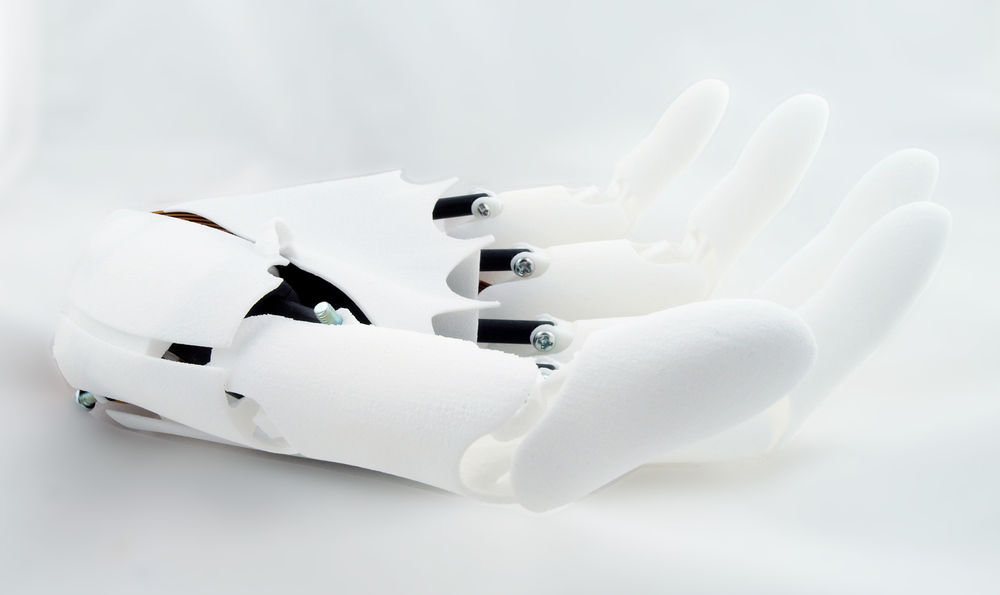 30+ sensors line the socket of each TrueLimb, vs. two in most traditional devices, which increases device activation and control.
30+ sensors line the socket of each TrueLimb, vs. two in most traditional devices, which increases device activation and control.
Photo Credits: Unlimited Tomorrow
3DN: Why did Unlimited Tomorrow turn to 3D printing and scanning for the creation of the TrueLimb prosthetic?
Currently, we use 3D printing, 3D scanning, 3D modeling, smart algorithms, and a fully digital workflow in the creation of our prostheses. 3D printing helped to solve the biggest challenge of all when it comes to prosthetic arms – weight. Through 3D printing, we have been able to produce a device that is a fraction of the weight of other devices, but also incredibly durable. The combination of 3D scanning and 3D printing allows us to create a prosthetic arm that is fully personalized for each user, with next to no waste. Additionally, the fact that our process is fully digital enables us to expand accessibility to advanced prosthetic technology.
The process is also simple and convenient. It starts by asking the user to answer a few questions and schedule a one-on-one consultation with our clinical team. Next, we ship a 3D scanner so they can scan their residual limbs, with these we create a set of check sockets. The check sockets are shipped and once again users need an evaluation with our clinical team to assess the comfort and fit, this can be repeated until the perfect comfortable fit is achieved. The final step is to 3D print, assemble and test the personalized TrueLimb.
Next, we ship a 3D scanner so they can scan their residual limbs, with these we create a set of check sockets. The check sockets are shipped and once again users need an evaluation with our clinical team to assess the comfort and fit, this can be repeated until the perfect comfortable fit is achieved. The final step is to 3D print, assemble and test the personalized TrueLimb.
3DN: Could you tell us more about Unlimited Tomorrow’s project to deliver TrueLimb to Ukrainians in need?
Sure! We have partnered with Singularity Group to raise $1M to create and deliver functional prosthetic limbs to 100 amputee victims of the Russian invasion of Ukraine. We are actively working with Ukrainians who have been impacted during the war, and are about to deliver the first TrueLimb to a Ukrainian user.
As the war continues, more and more Ukrainian citizens are being injured. Including those who are losing limbs. And we know that Unlimited Tomorrow’s use of advanced technologies and a fully remote process allows the company to immediately help amputees in Ukraine or anyone in a conflict zone. You can learn more about the project and donate by visiting the gofundme link HERE or watching the video below.
You can learn more about the project and donate by visiting the gofundme link HERE or watching the video below.
3DN: Any last words for our readers?
At Unlimited Tomorrow we believe in technology with purpose. Without newly available 3D printing, 3D scanning, 3D modeling, and smart algorithm technologies, TrueLimb would not exist. If you or someone you know has an upper limb difference, we would love to connect and share how we have harnessed technology to make an impact. You can learn more by visiting our website HERE and we invite you to follow us on our socials!
What do you think of Unlimited Tomorrow and its TrueLimb prostheses? Let us know in a comment below or on our LinkedIn, Facebook, and Twitter pages! Don’t forget to sign up for our free weekly Newsletter here, the latest 3D printing news straight to your inbox! You can also find all our videos on our YouTube channel.
Minsk residents are developing a movable arm that can be printed on a 3D printer
"Everything is as accessible as possible so that a person sitting at home can order parts on eBay, print according to instructions and assemble at home." 42.TUT.BY met with the authors of the MYoTriton project, who create an electromechanical hand using 3D printing.
What we do: motors instead of muscles
Oleg Galtsev and Sergey Arefiev have been working on a technological brush for about a year now. They design a hand in their free time from their main work. In "ordinary" life, Oleg is a programmer, Sergey is a design engineer.
The prosthesis that they are creating will be designed for those people whose arm is missing up to the elbow due to injury or congenital features. The main and first user of the technological brush is Oleg's father, who lost his arm about 20 years ago.
- At some point, I saw that bionic prostheses were being made in Germany, - says the programmer.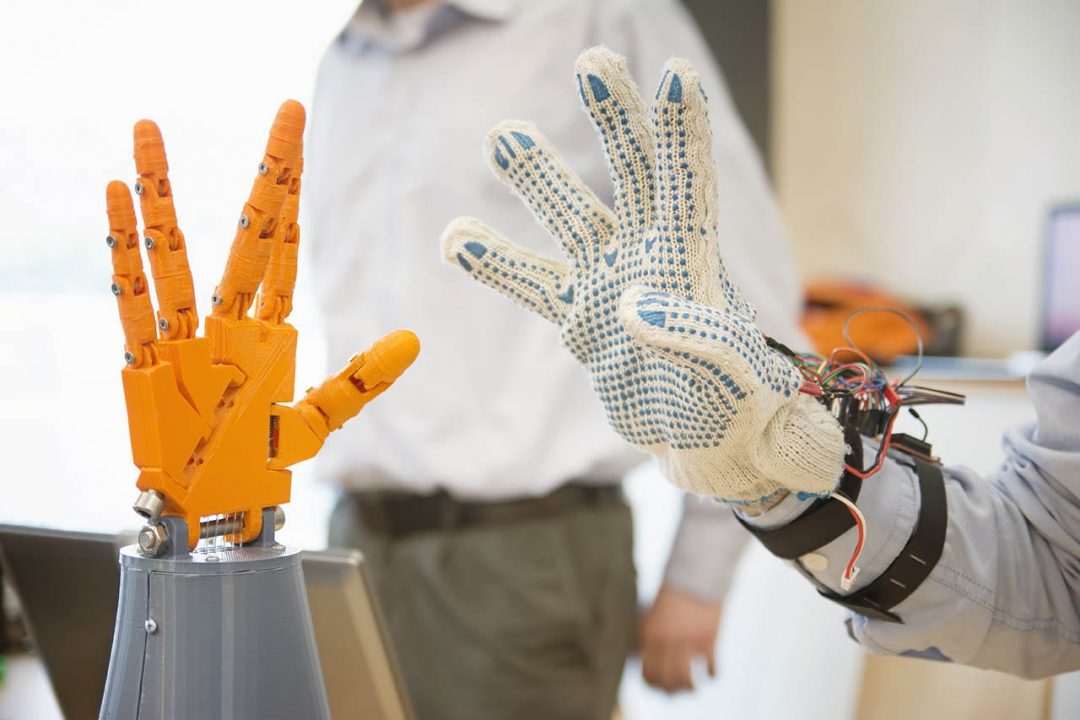 - I contacted this clinic: they told me that it would cost 25 thousand euros.
- I contacted this clinic: they told me that it would cost 25 thousand euros.
Oleg became interested in the topic and began to look for a way to reduce the cost of a movable brush. Later he was joined by Sergey, who specializes in 3D design.
Together, developers create a prosthesis that combines electronics and mechanics. The function of the muscles in it is performed by electric motors, the bones are parts printed on a 3D printer. Fingers can bend and unbend.
— Similar modern prostheses use sensors to record tension on certain muscles, — explains Oleg.
To make the prosthesis cheaper, the developers decided to abandon the complex control system and developed their own.
- We have moved away from the principle of myoelectric sensors, thereby reducing the cost and simplifying the control part. We develop the hardware stuffing and the hand itself using 3D printing, which is also very cheap.
The developers claim that their 3D printed prosthetic hand will cost about $500. This is very little - the price of a "regular" fixed prosthesis is about $ 1,000. Bionic options can pull tens of thousands of dollars.
This is very little - the price of a "regular" fixed prosthesis is about $ 1,000. Bionic options can pull tens of thousands of dollars.
How we do it: "We have never seen such a mechanism anywhere before"
The main feature of the prosthesis is a simple control system. A person can rotate with the part of the arm that remains below the elbow. This will be the main signal for the mechanism.
Special "pincers" hold the stump firmly and respond to turning. They can rotate inside the mechanism. The outer layer - the "casing" - "holds on" to the rest of the hand and remains motionless.
The developers explain: two signals - turn clockwise and back - will be enough to control the fingers: squeeze or unclench.
- A person does not need to move each finger individually, - Sergey explains. - There is a limited set of movements: you either squeeze all your fingers, or, for example, work with a computer mouse and use one or two.
By changing the mode of operation of the prosthesis, it will be possible to switch to another movement - for example, pressing with one finger instead of grabbing with the whole hand.
There is no prototype of the whole brush yet. But Oleg and Sergey are already showing a finger printed on a 3D printer connected to a control system. The finger moves smoothly and accurately, reacting to the turn of the "pincers". Although now it looks simple, the structure of the mechanism is quite complex.
- Inside the pin there is a worm gear, four bearings, a plate on which the electric motor is mounted, a rod that creates movement, - says Sergey. - Even assembling it from ready-made parts is painstaking work.
Four fingers are now ready - from the index to the little finger. The big one is yet to be thought out, designed and printed.
- Until we fully figured out the function of the thumb - how it will look, how it will be attached to the hand and work. When we resolve this issue, we will be able to print the body of the brush. Until then, there is no point in doing so.
The developers plan to put on a “glove” on the plastic “skeleton” to make the hand look natural.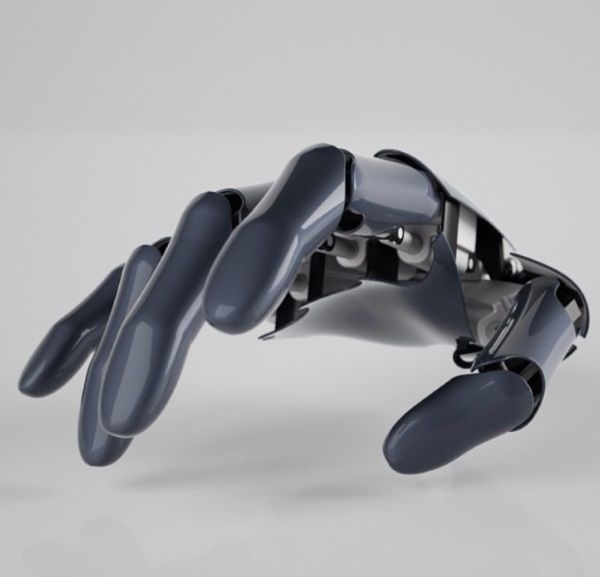 Oleg and Sergey also developed their own mechanism for turning the hand and a method for making a sleeve - an artificial analogue of the forearm.
Oleg and Sergey also developed their own mechanism for turning the hand and a method for making a sleeve - an artificial analogue of the forearm.
- We have never seen such a prosthesis control mechanism as we do, - says Oleg. — Perhaps we are looking badly. But now we reach everything ourselves, these are unique developments.
What we have achieved: “We don’t have a goal to make money on this yet”
The developers participated in the Social Weekend social project competition with the brush project. After him, offers of help rained down. It turned out that there is practically no point in sponsoring the project - all components are cheap. But the owner of a 3D printer was found, which now helps to print parts for the prototype.
- We don't have a goal to make money on this yet. We make the project open - we post all the files on the site. Anyone can download the 3D printing files and print the parts themselves.
Microcircuits are also all described, they do not cost fabulous money.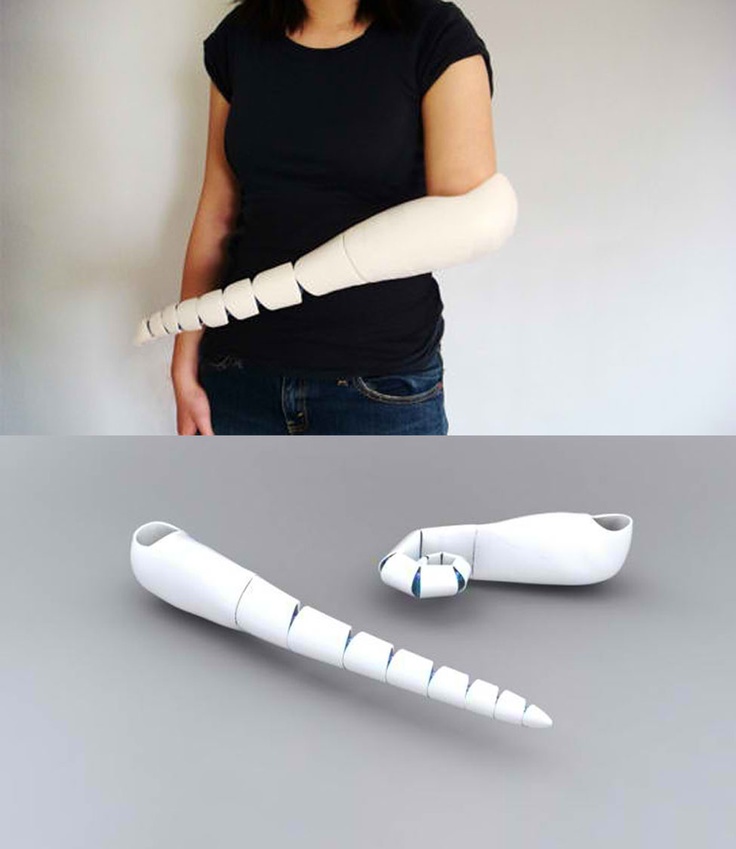 The price of a motor, for example, is around $5. Everything is as accessible as possible so that a person sitting at home can order parts on eBay, print according to the instructions and assemble.
The price of a motor, for example, is around $5. Everything is as accessible as possible so that a person sitting at home can order parts on eBay, print according to the instructions and assemble.
When the brush is ready, the developers promise to publish assembly instructions. If the prosthesis is sold, they promise not to break the price.
- In general, we consider the project as a business, - says Oleg. - But I think when the brush is done, it will come by itself. First of all, the goal is to help people. And making money on it will never be a problem.
What's Next: "Bionic Prosthesis Owners Needed"
The developers promise to show the prototype of the brush by the New Year. Many elements should become more compact than what they show us. Oleg's father will be the first to try the brush. However, the developers also do not refuse the help of other volunteers.
- We need people in Minsk who have bionic prostheses to listen to their opinions. Even the most famous brands have problems that are not mentioned in advertising. For example, BeBionic - they have a very "grasping" glove - you can take a glass or a fork with it. But it is impossible to wear a shirt or jacket in it - it is too sticky. This is the kind of feedback we need right now.
Even the most famous brands have problems that are not mentioned in advertising. For example, BeBionic - they have a very "grasping" glove - you can take a glass or a fork with it. But it is impossible to wear a shirt or jacket in it - it is too sticky. This is the kind of feedback we need right now.
The developers do not plan to switch to bionic legs or eyes. But how to improve the brush - they are already thinking.
— We have other ideas. But we decided to bring what we are developing now to its logical conclusion - printing and assembly. After we finish this, we will improve and think further.
Source TUT.BY
Yakutians made a 3D-printed bionic hand prosthesis
A group of Yakutians made a bionic hand prosthesis. To do this, they printed out the details of a cosmetic prosthesis, assembled it, and combined the bionic brush with the base of the prosthesis.
They have already handed over this apparatus to a volunteer, the beautiful Nyurguyana Popova, who approved the novelty. The most remarkable thing is that the authors are going to make prostheses accessible to everyone. That is, anyone can make it himself, fit it to his size.
Aiyyskhan Alekseev with NyurguyanaProject initiator Aiyyskhan Alekseev told the SakhaDay journalist how the work on the prosthesis went.
To our surprise, it was not a company with a name that worked on the prosthesis, but a group of enthusiasts: “We are all volunteers, you can say an initiative group consisting of students and working people. Everyone is connected by the student business incubator "Nut", which comprehensively supports and helps us.
This project is non-commercial and socially oriented. The main idea: to collect a hand and put in the public domain all the files and Russified instructions so that anyone can use them and assemble such a prosthesis. It would also be great if people themselves spontaneously began to improve the design of this prosthesis and also shared among themselves.”
It would also be great if people themselves spontaneously began to improve the design of this prosthesis and also shared among themselves.”
- You indicated that the design is Japanese, the components are Chinese, the circuit board is Singaporean, the adaptation and assembly is Yakut. How difficult was it to adapt and assemble everything?
- Yes, Japanese design. We correspond with them, the Japanese. But, as it turned out, some details are hard to find here. For example, springs of the required sizes and parameters, as well as small screws. We ordered similar springs from the factory. The screws were replaced with appropriately sized screws and the like. Also, we could not find two motors that were used in the original (Japanese) model on the Russian market, and we had to use motors with similar characteristics, and slightly customize the brush model and some details.
- What are the prospects for this direction in Yakutia?
- Such prostheses are relevant regardless of the region.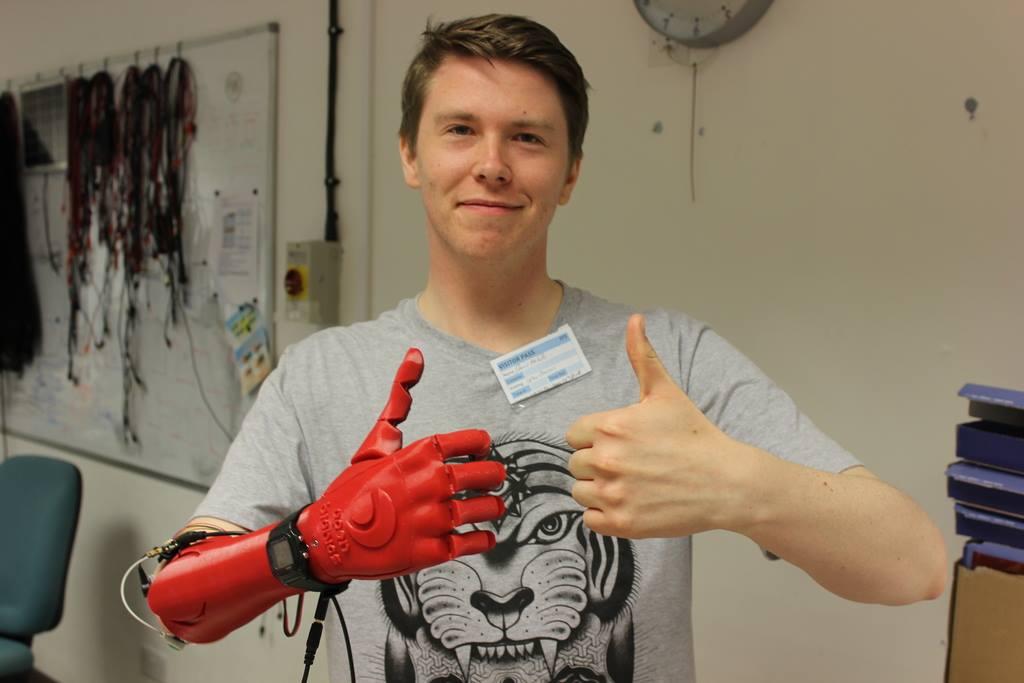 Especially when commercial counterparts cost as much as a car and more. And if we talk about climatic features, then, of course, we need to pay great attention to thermal insulation.
Especially when commercial counterparts cost as much as a car and more. And if we talk about climatic features, then, of course, we need to pay great attention to thermal insulation.
- Will you do this seriously? Or was it just a test of strength?
- Since this is a volunteer project and as such there is no solid team, therefore, as far as possible, we will gradually develop the project. The most important thing now is to launch a website where we will post files and instructions in the public domain. There will also be a thematic forum where people will share their best practices and improvements. Also, now my colleagues and I are trying to open a bionics laboratory within NEFU, and if things move forward, the project will become permanent.
- What conclusions did you draw?
- This model of prosthesis has a very great potential for improvement and development. Also, although the model is Japanese, but, like any new device, it has its own "childhood illnesses", for example, we found that some components and elements require strengthening and all sorts of improvements.



